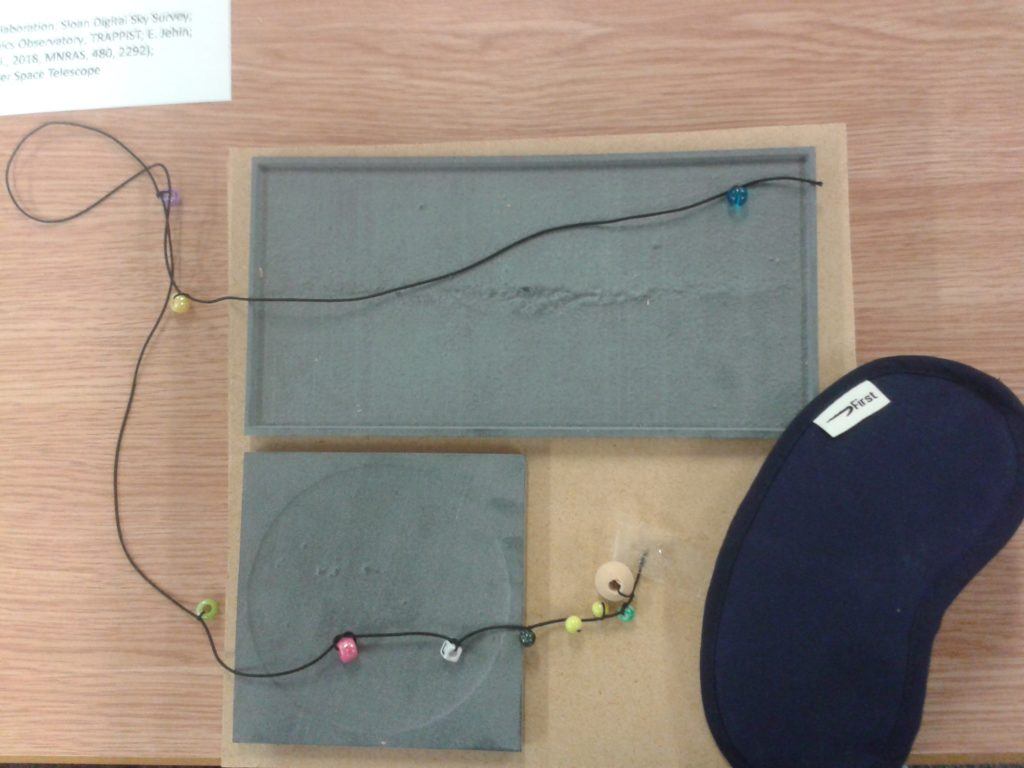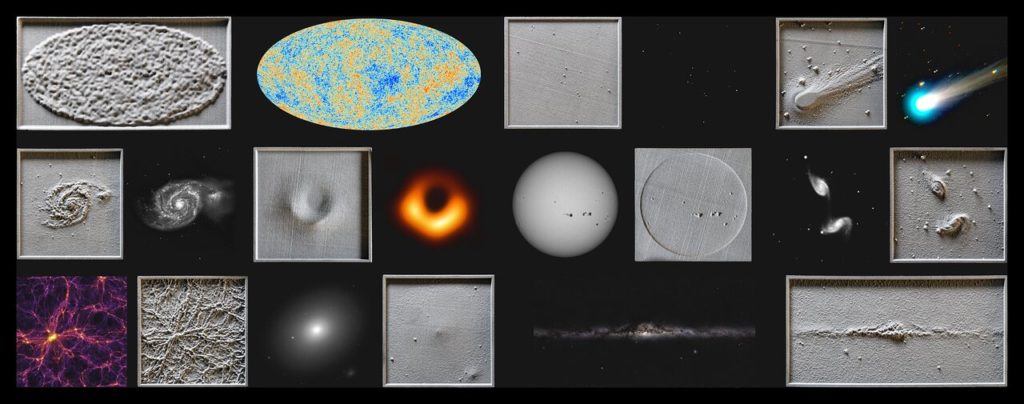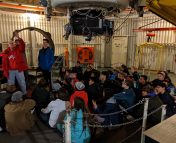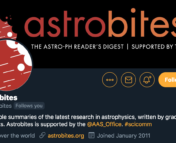Astronomy and astronomical outreach is predominately visual. People describe the beauty of seeing the night sky, and astronomical phenomena and how this inspired their interest in astronomy. But astronomy, and an understanding of our place in the universe is for everyone, including people with visual impairments. To find out how astronomy can be shared without relying on images and visual representations, I attended the ‘Dark Tour of the Universe’ workshop, which was part of the British Science Festival hosted at the University of Warwick in September.
The workshop was hosted by Dr Nicolas Bonne, an astronomer from the University of Portsmouth. His research focuses on galaxy evolution and developing resources for the visually impaired (Dr Bonne is himself visually impaired). The workshop was aimed at both sighted and non-sighted participants, and I took up Dr Bonne’s invitation to don a blindfold for a dark tour of the universe.
Our audio and tactile tour of the universe
We begin here on Earth, specifically at ESO’s Very Large Telescope in Chile, to experience the stars appearing in the night sky as the sky darkens. Instead of seeing these stars appearing on a screen, we hear their arrival in surround sound, using real data for the positions, magnitudes and colour, with volume representing star brightness (brighter stars are louder) and pitch representing the stellar colour (red is lower pitch) – you can hear the stars appearing track here.
Of course, our ears are not the only sense available, and using touch we explore our Solar System, starting with a tactile model of the Sun made using images from the Solar Dynamics Observatory with raised areas showing the size and locations of sunspots on the Sun’s surface (bottom plate in Figure 1). We feel the increasing separation of planets in the outer system by the increasing distances of beads on a piece of string in a scale model (Figure 1).

Moving beyond our Sun, sound is useful for exploring how the lightcurves of some stars are variable, regularly changing over short periods of time. We listen to the periodic brightening and dimming of Cepheid variables, which were instrumental in discovering the size of our universe. The increasing size of periodic pulsations from Cataclysmic variables (a type of binary system), with volume representing brightness, sound very different (Track B – listen here). Bringing a relatively recent discovery into the show, we hear the monster exoplanet NGTS-1b transiting its small host star causing a 2.5% dip in light, represented by a decrease in pitch. Considering another exoplanet system, Trappist-1, a melody is built up as each of the seven planets pulse as they pass in front of their star, allowing us to hear how the planets are in resonance (with e.g. planet h completing 2 orbits in the same time as planet g completes 3). Another version of the Trappist-1 planetary orbits can be heard on the video below.
As well as being able to represent the period of orbital planets, sound can be used to illustrate something our eyes and telescopes cannot see: dark matter. When telescopes across the electromagnetic spectrum map out the structure of galaxies, we see that the detectable amount of matter drops as distance from the galactic centre increases. Based on the amount of visible matter, we can listen to the change in pitch of the expected rotation curve (rotational velocity increases from the centre before decreasing again). We then hear the actual observed rotation curve: rotational velocity increases but does not decrease again at larger distances. We can hear how the difference in pitch or rotational velocity between the expected model and observed data signals the existence of dark matter. (For more information, read this astrobite on Vera Rubin’s discovery of dark matter).
While there is usually vast distances between galaxies, they interact gravitationally and can ‘collide’. We feel the structures of these galaxies on the tactile model (second row, far right of Figure 3) before listening to a N-body simulation converted to sound, hearing the galaxies dance closer to one another before they finally merge – you can listen to the merging galaxies track here.
One of the last stops on our tour was the first image of the event horizon of a black hole which hit the headlines this year. We explore the shape of the event horizon in the tactile model, with more raised regions allowing us to feel the brighter regions in the original image (the second model on the second row in Figure 3).

Reflection
For me, while I was blindfolded, this was an eye-opening experience. It demonstrated how reliant we are on visual representations of our work and how we can gain a new appreciation of astronomy by using our ears and hands to explore the universe around us. I was surprised how much you can communicate using sound alone, and even how hearing the harmonic orbits of Trappist-1 can be easier than seeing it. It is also an important reminder to consider how our research can be converted into different formats to allow people who are visually impaired to engage with ongoing astronomical research and allow them to pursue research themselves.
Find out more:
Dr Bonne leads The Tactile Universe project (@tactileuniverse), making tactile models available on their website. Acknowledgements for the show are listed here. Listen out for more models and sonifications from the show in the future. The University of Portsmouth has two of the audio files on their soundcloud. System Sounds has audio representations of Trappist-1 and other astronomical systems. A general list of resources on astronomy for the visually impaired can be found here.





Trackbacks/Pingbacks